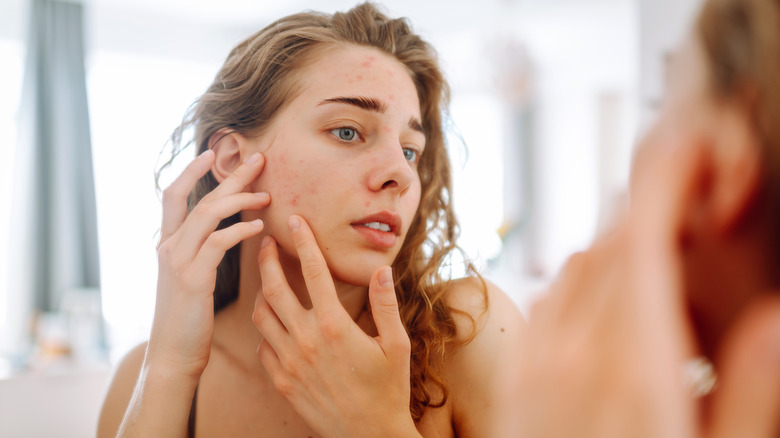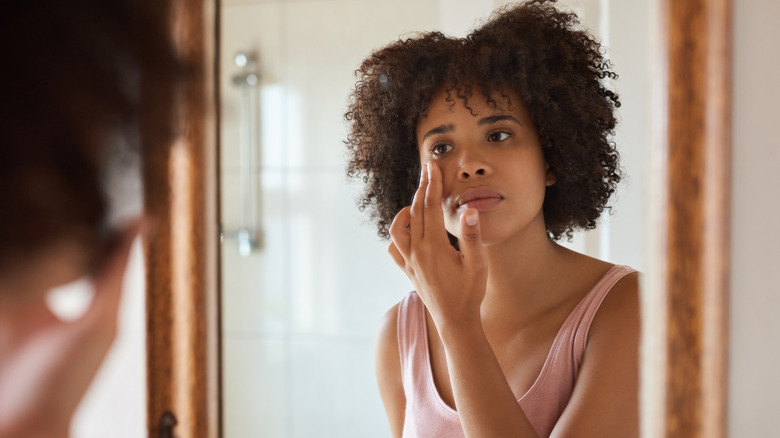How Many Steps Is Too Many In Your Skincare Routine?
"TikTok made me buy it!" This is the rallying cry of millions of beauty lovers online, as social media reshapes how we shop, layer, and obsess over skincare. A quick scroll through your FYP can reveal a dizzying procession of products, many with names you can barely pronounce. In the rush to keep up with every viral recommendation — copper peptides, exosomes, resveratrol, and so on — the number of steps in many skincare routines has ballooned to double digits.
But amid the maximalist glow-up, others are starting to push back, questioning whether all of this is, in fact, necessary — or even helpful. According to Palm Beach and New York City-based dermatologist Dr. Hannah Kopelman, the answer is often no. In her practice, she sees patients layering product after product in pursuit of perfection, convinced that complexity must signal efficacy. "There is such a thing as too many steps," she exclusively tells Women, noting that piling on actives (the term used in skincare to describe ingredients that actively target concerns) can do more harm than good, particularly for those with sensitive or acne-prone skin.
Kopelman advises that "in reality, the right routine depends on your skin type and specific concerns." What matters isn't the number of steps, but whether each one is actually serving your skin's needs.
Overdoing your skincare routine has hidden costs
An artfully arranged shelf of serums and tonics may photograph well, but a routine that photographs well is not necessarily one that performs. In Dr. Hannah Kopelman's view, once a routine exceeds five or six steps, especially when it involves multiple actives, it often begins to work against itself. This kind of overload may leave the skin dry, reactive, and prone to flare-ups, including stinging and unexpected breakouts. "Patients double up on exfoliating acids and then wonder why their skin barrier is completely wrecked," remarks Kopelman.
But the issue isn't only excess. Ingredient interaction can be just as harmful. Some ingredients, when combined, cancel one another entirely. Kopelman uses benzoyl peroxide (the acne-busting antibacterial) and retinol (the gold-standard anti-aging and acne treatment) as an example, because benzoyl peroxide acts against retinoids. Other combinations, such as pairing a vitamin C serum with niacinamide, can compromise each other's results depending on the formulation and timing. What we don't want is a chemical stalemate.
And in the absence of an obvious reaction — no peeling, no redness, no rash — subtle sabotage may still be underway. Kopelman reminds us that dullness and clogged pores can be indicators that you are "just wasting time and money on steps that aren't actually necessary."
How to build a smarter routine, that's actually dermatologist-approved
In this age of overconsumption, it might come as a shock that a well-constructed routine doesn't begin with 12 steps. For Dr. Hannah Kopelman, the essentials are trifold: "cleansing, moisturizing, and sun protection." These are non-negotiable. "Once you have those locked in, then you can think about adding treatments for specific concerns, like acne or pigmentation."
But even then, additions should be made with precision; layering on is only worthwhile when it serves a deliberate function. Kopelman tells her patients, "Be intentional. Every product you use should have a clear focus," and any other steps should be selected with care, not out of habit, nor out of hype. "Good skin is a marathon, not a sprint," she reminds us, "and honestly, sometimes less really is more when it comes to skincare."


